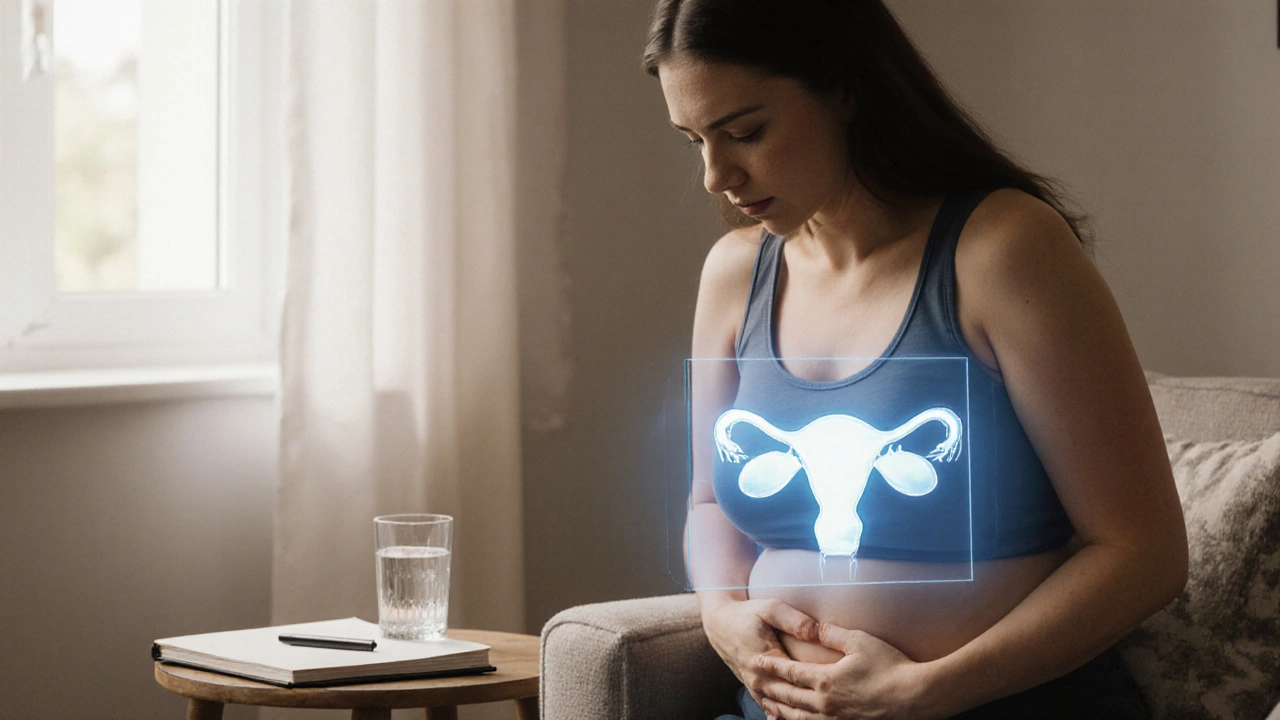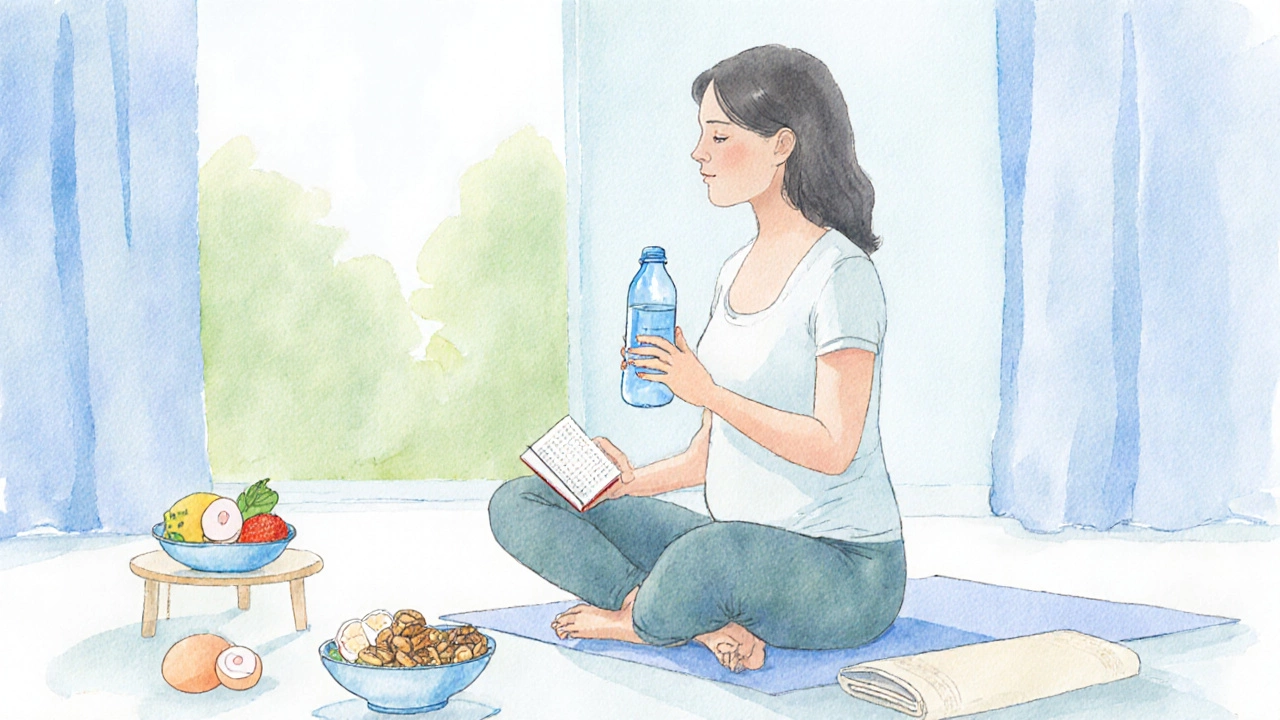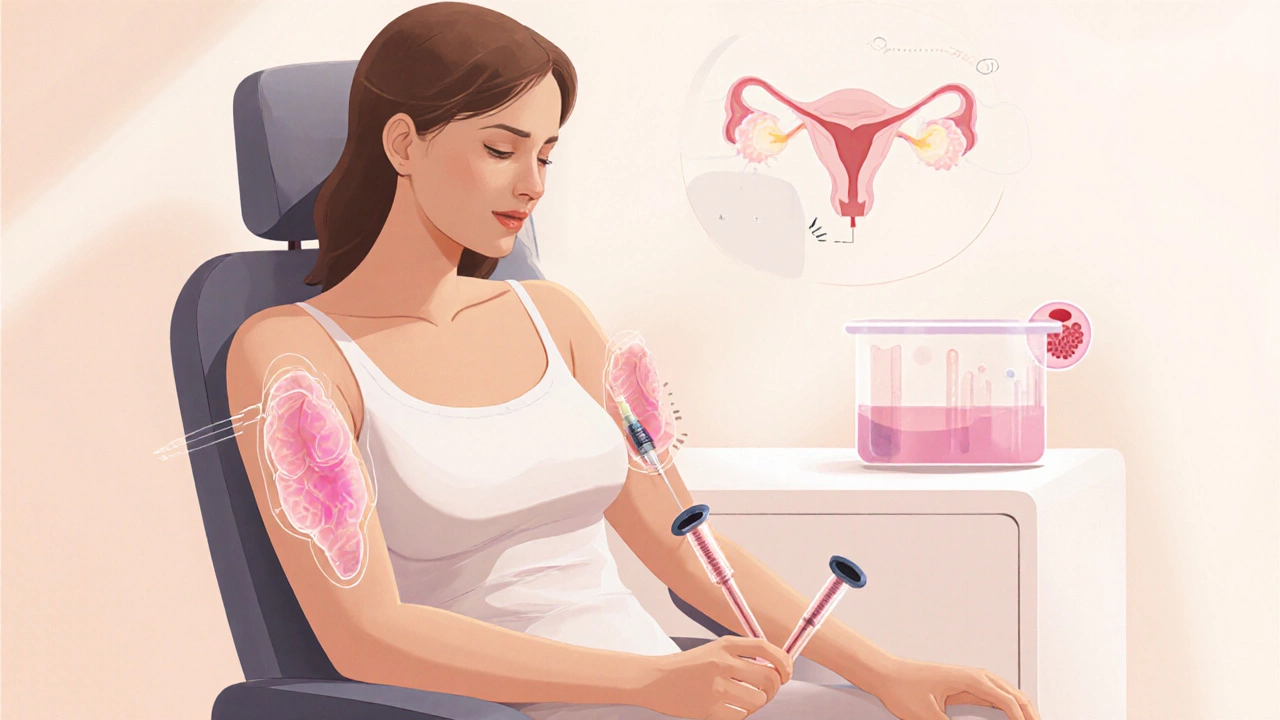IVF Side Effects Symptom Checker
Common IVF Side Effects
Bloating
Fluid retention due to hormonal changes.
Cramping
Uterine contractions after embryo transfer.
Fatigue
Hormone spikes causing tiredness.
Breast Tenderness
Similar to pre-menstrual changes.
Spotting
After egg retrieval or embryo transfer.
OHSS Risk
Ovarian hyperstimulation syndrome requiring medical attention.
Key Takeaways
- IVF involves hormone injections, egg retrieval, and embryo transfer, each with its own physical demands.
- Short‑term side effects are usually mild (bloating, cramping) but can include ovarian hyperstimulation syndrome (OHSS), which may require medical attention.
- Long‑term risks such as ovarian cysts, altered menstrual patterns, or rare complications are uncommon but worth monitoring.
- Proper monitoring, hydration, and a balanced diet can reduce most discomforts.
- Seek immediate care if you experience severe pain, rapid weight gain, or persistent fever after any IVF step.
When talking about assisted reproduction, IVF is in vitro fertilization, a medical process that joins a woman's egg and her partner's sperm outside the body and then places the resulting embryo back into the uterus. The journey typically spans several weeks and includes hormone stimulation, egg retrieval, fertilization, embryo culture, and embryo transfer. Each stage puts a different kind of stress on the body, which is why many women wonder if IVF is "hard" on them.
What Happens Inside the Body During IVF?
Understanding the mechanics helps you anticipate where discomfort might arise. First, fertility specialists prescribe hormone injections (usually follicle‑stimulating hormone, FSH, and sometimes luteinizing hormone, LH) to stimulate the ovaries to produce multiple eggs. These drugs boost estrogen levels, leading to ovarian enlargement.
Once the follicles are mature, a minor surgical procedure called egg retrieval is performed under light sedation. A thin needle extracts the eggs through the vaginal wall. After fertilization in the lab, the resulting embryos are cultured for 3‑5 days before a embryo transfer (ET) places one or more embryos into the uterus.
Each of these steps triggers a cascade of physical reactions, from the hormonal surge to the brief anesthesia needed for retrieval.

Short‑Term Physical Effects You’re Likely to Feel
Most women experience mild to moderate symptoms that resolve within a week or two. Below is a quick snapshot:
- Bloating and abdominal fullness - estrogen causes fluid retention.
- Breast tenderness - similar to pre‑menstrual changes.
- Spotting or light bleeding - occurs after egg retrieval or embryo transfer.
- Cramping - the uterus may contract after ET.
- Fatigue - hormone spikes can make you feel unusually tired.
These symptoms are usually manageable with rest, hydration, and a balanced diet. However, a small percentage of women develop Ovarian hyperstimulation syndrome (OHSS), a condition where the ovaries become overly swollen.
OHSS: When Hormone Stimulation Goes Too Far
OHSS ranges from mild (just more bloating) to severe (painful, fluid accumulation in the abdomen and chest). Key warning signs include:
- Rapid weight gain (more than 2‑3kg in 48hours).
- Severe abdominal or pelvic pain.
- Shortness of breath or coughing.
- Decreased urine output.
Doctors usually catch OHSS early through ultrasound monitoring and blood tests. If you notice any of the above, call your clinic immediately. Most cases resolve with outpatient care-hydration, pain relievers, and sometimes a brief hospital stay for IV fluids.
Long‑Term Health Considerations
Research over the past two decades shows that IVF does not dramatically increase long‑term health risks for most women. Still, there are a few areas worth keeping on your radar:
| Aspect | Short‑Term | Long‑Term |
|---|---|---|
| Hormonal changes | Elevated estrogen, mild mood swings | Usually normalize within 2-3months; rare cases of persistent menstrual irregularities |
| Ovarian health | Ovarian enlargement, possible OHSS | No clear evidence of increased ovarian cancer risk; slight rise in benign cyst formation reported |
| Uterine lining | Transient thickening, spotting | Normal uterine health resumes after pregnancy or cycle completion |
| Psychological well‑being | Stress, anxiety around outcomes | Potential for lingering fertility‑related stress; counseling recommended if feelings persist beyond 6months |
One concern that surfaces often is the risk of ovarian cysts later in life. A large-scale study from 2022 involving over 10,000 IVF patients found only a 1.5% higher incidence of benign cysts compared to women who never underwent assisted reproduction. This difference is modest and typically does not require surgery.

Managing Discomfort: Practical Tips
Here’s a checklist you can follow during the IVF cycle to keep the body as comfortable as possible:
- Stay hydrated - Aim for at least 2.5liters of water daily; it helps reduce bloating and supports kidney function in case of OHSS.
- Eat protein‑rich meals - Protein aids tissue repair after egg retrieval and stabilizes blood‑sugar spikes caused by hormone meds.
- Gentle movement - Light walking or prenatal yoga can ease abdominal cramps and improve circulation.
- Track symptoms - Use a simple diary to note pain levels, weight changes, and any unusual bleeding. Share this with your doctor during monitoring visits.
- Take prescribed meds exactly as directed - Skipping a dose of hCG or FSH can throw off the entire cycle.
If you experience severe pain, persistent fever, or vomiting after the retrieval, treat it as an emergency. These can signal infection or a severe OHSS reaction.
When to Seek Medical Help
Below is a quick guide on red‑flag symptoms and the appropriate response:
- Sudden, sharp pelvic pain - Call your clinic within 24hours; could be ovarian torsion.
- Rapid weight gain with swelling - Contact the clinic immediately; risk of moderate to severe OHSS.
- High fever (>38°C) or chills - Possible infection after retrieval; seek urgent care.
- Shortness of breath - May indicate fluid in the chest cavity; go to the ER.
Most clinics provide a 24‑hour hotline for cycle‑related concerns. Keeping the number handy saves precious time.
Frequently Asked Questions
Can IVF cause permanent damage to the ovaries?
Most studies show no lasting harm. The ovaries typically return to their normal size within weeks. A very small increase in benign cyst formation has been noted, but surgery is rarely needed.
Is the hormone regimen the same for every woman?
No. Doctors tailor the dose of FSH, LH, and hCG based on age, body mass index, and ovarian reserve tests (AMH, antral follicle count). Personalized dosing minimizes the risk of OHSS.
How long do side effects usually last after embryo transfer?
Cramping or mild spotting can linger for 2‑3days. Hormone‑related bloating usually eases within a week. If symptoms persist beyond two weeks, contact your doctor.
Does IVF increase the risk of miscarriage?
The miscarriage rate after IVF is comparable to natural conception for women of the same age. Age remains the strongest predictor, not the IVF process itself.
Can I continue my regular exercise routine during IVF?
Light to moderate activity (walking, swimming, prenatal yoga) is encouraged. Avoid high‑impact or heavy‑lifting workouts after egg retrieval, as they can increase abdominal discomfort.
